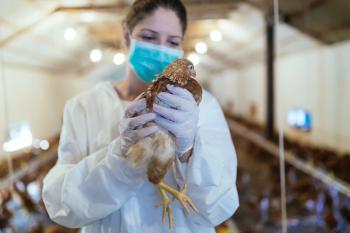
Factors Contributing to Lower-Than-Average Flu Season in 2020-2021
Multiple factors contributing to a lower-than-average flu season in 2020-2021 are discussed.
Episodes in this series

Transcript:
Peter Salgo, MD: Hello and welcome to this Contagion® Peer Exchange titled “Is Flu the Next Pandemic?” I’m Dr Peter Salgo. I’m a professor of internal medicine and anesthesiology at Columbia University Irving Medical Center in New York, [New York]. Joining me today in this discussion are my colleagues, Jason Gallagher, PharmD, a clinical professor at Temple University School of Pharmacy and a clinical pharmacy specialist in infectious diseases at Temple University Hospital in Philadelphia, Pennsylvania; George Loukatos, MD, a physician and the founder and owner of AlphaCare Urgent Center in Biloxi, Mississippi; and William Schaffner, MD, a professor of preventive medicine in the department of health policy, and a professor of medicine in the division of infectious diseases at the Vanderbilt University School of Medicine in Nashville, Tennessee. Welcome, all of you. It’s a pleasure to see you today, some of you virtually, and some of you here in the studio with me.
In today’s discussion, we’re going to share thoughts on the upcoming flu season, the importance of testing early to differentiate between COVID-19 and influenza, and the role of clinicians and pharmacists in early testing and patient education. Let’s get started. The first question is: What are the factors contributing to the lower-than-average flu season we all experienced in the 2020-2021 season? Some of this is straightforward. Bill, do you want to start us off?
William Schaffner, MD: Sure. It was absolutely a low flu season. It was the lowest in memory. It was remarkable. There are a number of things that contributed to that. The first factor is that international travel was profoundly reduced. During our summer, the Southern Hemisphere has influenza, and people traveling from the Southern Hemisphere to the Northern Hemisphere bring flu virus with them and introduce it. Not much of that happened this past year.
Then, of course, all our social distancing, mask-wearing, keeping separate, and avoiding large groups also contributed. If I had to pick 1 thing that was the most important, it’s that kids stayed home from school and didn’t play with each other. We say that the children have the distribution franchise for the influenza virus. They produce and shed more flu virus for longer periods of time. Those unhygienic darlings spread it among themselves, then bring it home to mom and dad, the neighbors, and the grandparents.
Peter Salgo, MD: I love your description of children as “unhygienic darlings.” I’ll share that with my wife. She may agree with you.
William Schaffner, MD: Now we’re opening up schools. We’re all out and about. We’re not wearing our masks, or maybe we are—it’s a little confusing at the moment. In any event, the interaction among people is going to be much more like the old normal, so I anticipate that we’ll definitely have an influenza season. Whether it’s mild, moderate, or severe, my crystal ball is cloudy about that, but we will have flu.
Peter Salgo, MD: What’s interesting to me is nobody intended to test the basic precepts of infectious disease by having a pandemic descend upon us. But this pandemic seems to have tested the basic tenets here, which are: Wear a mask, stay separate, don’t go out if you’re sick, and don’t travel if you’re sick. George, does this all make sense to you?
George Loukatos, MD: Yes. It makes me wonder how much of this we’re going to see in the future when it comes to our basic standards of hygiene, or whether mask wearing is going to become standard during flu season. The push for better hand washing and social distancing seems to have proven itself to be effective, at least for influenza this past year. I would echo what Bill said. I also wonder how much flu we’re going to see this year because I’m in an area of the country where we’re already starting to see social distancing and mask requirements coming back because we’re getting a spike in COVID-19. It’ll be interesting to see how this plays out. I agree, we’re definitely going to need to be testing for the flu, but I wonder if this past year was unique in any way or if it’s going to repeat itself this year.
Peter Salgo, MD: I want to thank all of you for watching this Contagion® Peer Exchange. If you enjoyed the content, please subscribe for our e-newsletters to receive upcoming Peer Exchangesegments and other great content right in your in-box.
Transcript edited for clarity.
Newsletter
Stay ahead of emerging infectious disease threats with expert insights and breaking research. Subscribe now to get updates delivered straight to your inbox.

































































































































































































































































































































